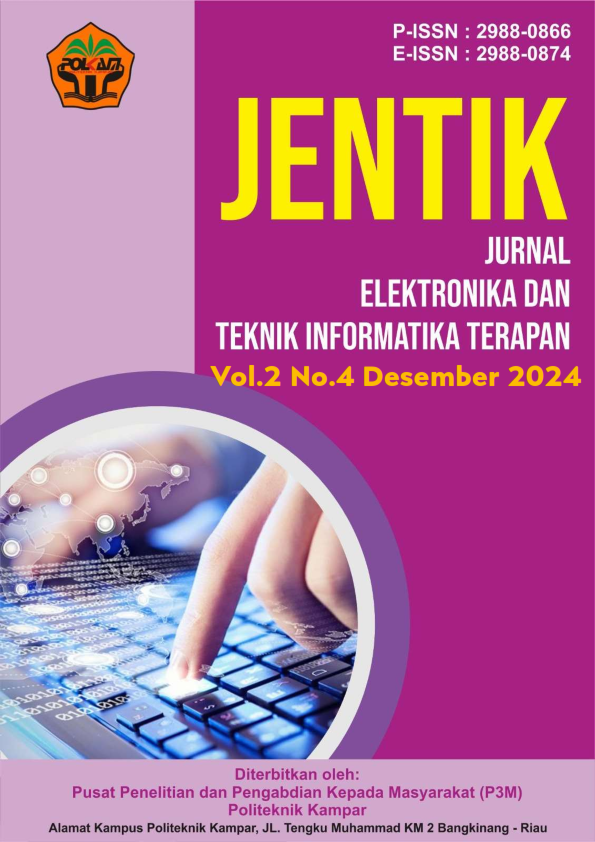Impelementasi Metode K-Means untuk Klastering pada Hasil Tanaman Padi di Aceh
DOI:
https://doi.org/10.59061/jentik.v2i4.868Keywords:
K-Means, rice growth, clustering, Aceh, agricultural productivityAbstract
Rice growth is a crucial indicator in determining the success of the agricultural sector, especially in agrarian regions like Aceh. This study aims to cluster rice growth patterns using the K-Means method, a widely recognized and efficient clustering technique. The analyzed data include land area, harvest yield, rice varieties, and environmental factors such as rainfall, temperature, and soil fertility. By applying the K-Means method, the data were grouped into several clusters representing the levels of rice growth across different regions. The results revealed significant differences in rice productivity among clusters, influenced by environmental factors and agricultural management. These findings provide strategic insights for decision-making, particularly in resource optimization and policy planning, to sustainably enhance rice growth outcomes in Aceh.
References
Hastuti, R., & Setiawan, D. A. (2021). Pengelompokan data penyakit TBC menggunakan algoritma K-Means. Jurnal Teknologi Informasi dan Komputer, 3(4).
Putra, M. A., & Hidayat, A. F. (2020). Clustering produktivitas pertanian menggunakan metode K-Means. Jurnal Teknologi Informasi Pertanian, 2(1).
Saputra, A. Z., Suarna, N., & Lestari, G. D. (2020). Klasterisasi nilai ujian sekolah menggunakan metode algoritma K-Means. Jurnal Sistem Informasi dan Komputer, 6(2).
Wardhani, A. K. (2019). K-Means algorithm implementation for clustering of patients disease in Kajen Clinic of Pekalongan. Journal of Health Informatics, 5(1).
Downloads
Published
How to Cite
Issue
Section
License
Copyright (c) 2024 Jurnal Elektronika dan Teknik Informatika Terapan ( JENTIK )

This work is licensed under a Creative Commons Attribution-NonCommercial-ShareAlike 4.0 International License.






